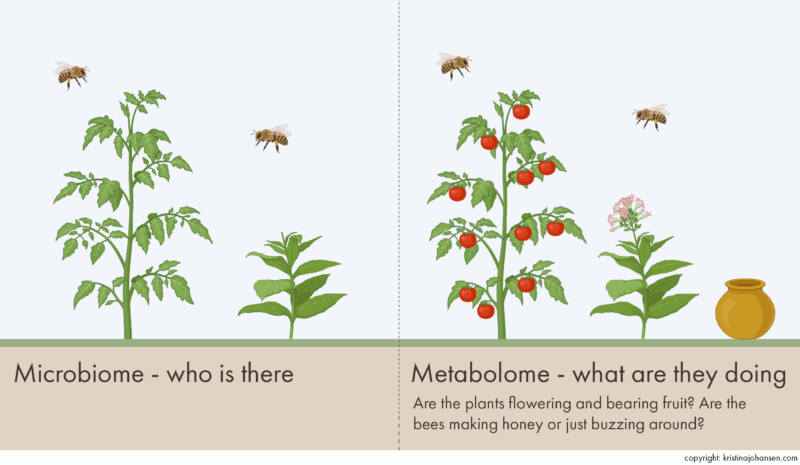Blog, Gut health
Fibre Variety: The Key to a Healthy Dog Gut!
You’ve probably heard that fibre is good for digestion, not just for us, but for our dogs too. Fibre helps firm up stools, keeps things moving, and the gut happy! But new research shows there’s a lot more to the fibre story – especially when it comes to your dog’s gut microbiome and overall health.
A 2025 study by researchers from Harvard University and Hill’s Pet Nutrition sheds light on the complex relationship between dietary fibre, gut bacteria, and the by-products they produce. Their findings are shifting the way we think about fibre; it’s not just how much fibre your dog eats that matters – it’s the variety that makes the biggest difference.
So, let’s unpack what this means and how you can use this knowledge to support your dog’s gut health through better nutrition.
The Microbiome & Metabolome: Your Dog’s Hidden Health Allies
Inside your dog’s gut lives a bustling community of trillions of microbes – bacteria, fungi, and other microorganisms. This microbiome plays a major role in digestion, immune function, and even mood. When your dog eats, they’re not just feeding themselves – they’re also feeding this microscopic ecosystem.
Dogs can’t digest fibre because they lack the enzymes needed to break it down. Instead, some types, known as non-fermentable fibre, pass through the gut and help bulk up the stool, supporting regular bowel movements. Others, called fermentable fibres, act as food for the gut microbiome. The microbes break these fibres down and produce compounds called metabolites. One very important group of metabolites, known as short-chain fatty acids (SCFAs), helps reduce inflammation, strengthen the gut lining and support overall health.
Before we read on, think of the microbiome and metabolome this way: the microbiome tells us who’s there; the metabolites hint at what they’re doing. And when it comes to your dog’s health, what they’re doing can make all the difference.
Here’s a visual to help show the difference between the two.

The Study
The study tested 12 different diets on 18 healthy dogs, all containing different fibre types and amounts. Rather than simply increasing the total fibre content, researchers mixed things up with different fibre sources.
What they found was that different fibre types fed different microbes. Even when two foods had similar total fibre content, the gut responses could be completely different depending on what kind of fibre was in the food.
When the researchers looked at each dog individually, things got a lot more interesting. Even when the dogs ate the same fibre, they didn’t all respond the same way. Some dogs showed noticeable changes in their gut bacteria and in the metabolite production, while others showed very little change at all.
This suggests that a dog’s unique microbiome influences how they respond to certain fibres. In fact, the metabolite response – what their microbes actually produced – was more consistent than the microbial changes themselves. In other words, different microbial communities could still produce similar beneficial compounds from the same food.
Think of it as a kind of backup system: different microbes can step in and do the same job, even if the mix of bacteria varies from dog to dog. That’s a good thing; it means the gut can adapt. But it also means there’s no single fibre that works the same way for every dog.
The researchers didn’t just look at which gut bacteria were present or how much metabolite levels increased – they also looked at which specific metabolites the microbiome produced, and what that might tell us about how the gut was functioning.
In short, the research found that dogs that ate a more varied fibre diet produced a richer mix of health-promoting compounds.
What This Means for Your Dog’s Diet and Health
Fibre diversity matters! Here’s why: if one fibre feeds one type of beneficial bacteria, and another fibre feeds a different one, then rotating or mixing fibres can support a broader, more resilient microbial community. And that’s exactly what a healthy gut needs.
In my experience working with clients, I’ve seen time and again how dogs thrive when switched to a balanced homemade diet. Now we know that one factor might be the natural diversity in plant ingredients – and with it, a broader range of fibres.
Most commercial dog foods contain a limited range of fibre sources, which likely won’t offer the variety needed to support a diverse and resilient gut microbiome.
However, if you’re feeding a commercial diet, you can still support your dog’s gut health by adding small amounts of vegetables and fruits to their bowl. Here’s how:
- Rotate your veggies: Include a variety of non-starchy vegetables such as carrots, broccoli, cauliflower, and leafy greens. Each offers a slightly different type of fibre.
- Rotate your fruits: Include a variety of fruits such as blueberries, bananas or apples.
Introduce new foods slowly to check for tolerance, and increase the amounts gradually. Larger quantities can upset the gut if added too quickly.
Final Thoughts
We’ve long known that fibre is good for dogs. But this new research adds depth to our understanding, showing that fibre is not just a filler – it’s functional, powerful, and complex!
Most importantly, it’s not about one magic fibre. It’s about giving your dog a variety of fibres so they can feed a diverse and dynamic community of gut microbes.
So the next time you prep your dog’s dinner, remember, fibre variety isn’t just a nice extra — it’s a powerful tool for supporting gut health. And it’s one of the simplest ways to help your dog thrive from the inside out.
About the author:
Kristina Johansen, Cert ACN, MSc Animal Nutrition (cand.) is a pet nutritionist with over 15 years of experience. She specialises in home-prepared dog diets that meet NRC guidelines. Learn more →
